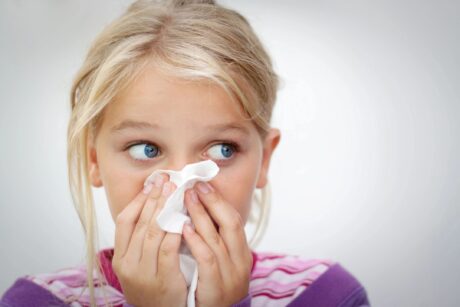When most people think of pollen, they immediately think of allergies, yet pollen actually serves an important purpose in maintaining a healthy ecosystem. For a plant to generate fruit and seed, pollen must move from the anther of the same or another flower to the stigma. Although some plants may spread their pollen by themselves or with the help of the wind, most flowering plants require the assistance of an animal – like a bee, for example – to successfully transfer their pollen from one flower to another. Read on for some more interesting facts about pollen.
Pollen Is Yellow
Pollen is almost always yellow, no matter what flower it comes from. (When it rains on your car or house, you can see it.) This is because of a chemical called flavonoids.
Flavonoids are also what give many citrus fruits their bright yellow and orange colors. These flavonoids have a protective effect on the plant’s DNA and keep it from changing. As for why pollen is yellow, it’s most likely so that pollinators like bees can easily see it.
Pollen Can Cause An Allergic Reaction – But Not Always
People with “hay fever” are allergic to pollen, but not all pollen makes them sick. The tiny pieces of pollen that do have a protein that makes people sick are called allergens. When they get into the respiratory system, B cells of the immune system make antibodies to attack. This overproduction also causes white blood cells to release histamines, which cause blood vessels to widen and cause stuffy noses and swollen eyes.
You Can Press Pollen
Using a pollen press, you can turn pollen – and other substances – into ‘coins’ or ‘pellets’. Despite how delicate pollen is initially, once you use a good press, like a rosin press, for example, you can end up with a solid brick of pollen that can then be used for anything you want, from smoking to cooking. Once pressed, pollen is extremely versatile; read more in the next point.
Pollen Is Edible
Both pollinating and non-pollinating animals will eat pollen, and they are known as palynivores. Of course, bees ingest pollen, but so do many other insects. Even spiders, which are more commonly associated with being carnivorous, have been seen consuming pollen that has become stuck in their webs.
Besides being eaten as a supplement, pollen is employed in a wide variety of foods because of the widespread belief that it contains significant nutritional value for humans.
Beekeepers will often place “pollen traps” on their hives to harvest pollen by capturing and removing the pollen off the worker bees as they enter the hive.
Humans also harvest pollen from cattails and pine trees, both of which rely on the wind for reproduction. Pine pollen is used in a variety of Korean desserts, such as dasik, for example.
When Was the Word Pollen First Used?
Carolus Linnaeus, the inventor of the modern system of natural classification (or taxonomy), is credited with being the first scientist to use the term “pollen” in a scientific context in the 18th century. He coined the term, derived from the Latin for “fine powder,” to refer to the small particles of genetic material released by plants.
5 Facts About Pollen You Never Knew
September 26, 2022 by








